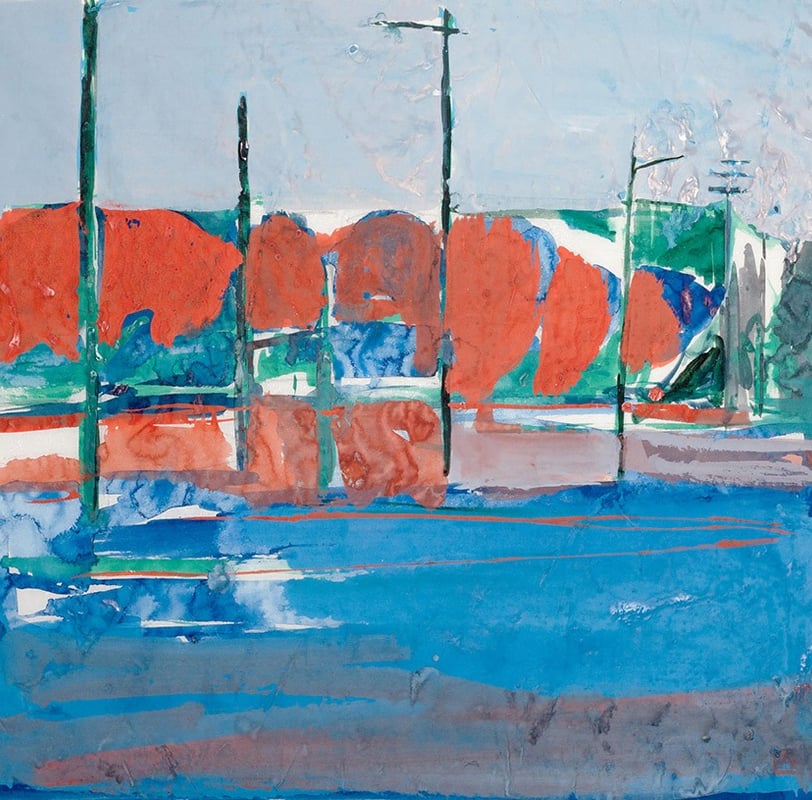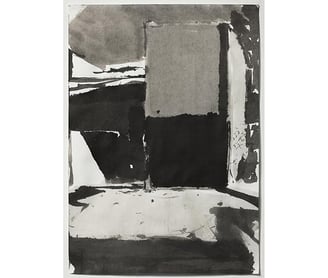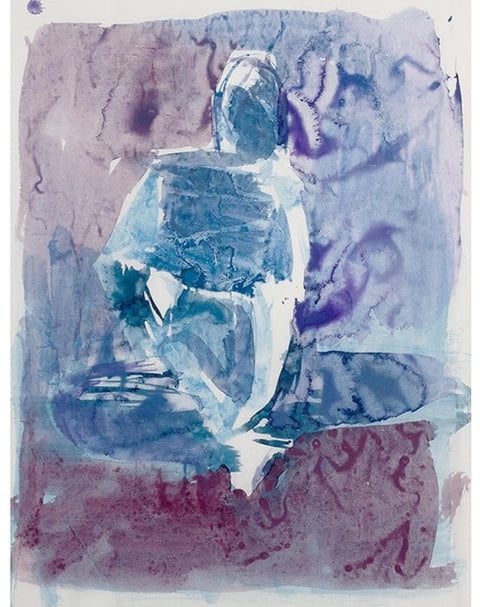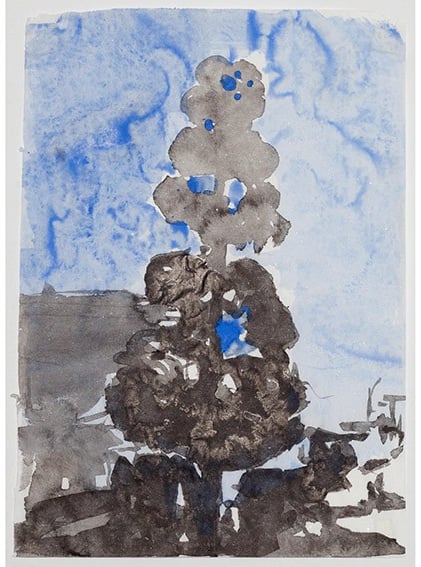Stendhal-Syndrome-Inducing: James Iveson
Daisy Sheff
6/4/2015


Images © Copyright James Iveson
I knew James Iveson first as the TA for my beginning drawing class. He made me think about drawing differently. Now when I draw, I consider what I’m looking at as relationships of colors and shapes, rather then already defined forms. James, a UCLA art department grad student, is a contributor to Graphite Six: Practice. The first works of his I saw were his smaller black-and-white sumi ink landscapes. As I’ve gotten to know James, I have seen more of his work— his colored sumi ink drawings and larger oil paintings. It is the kind of work that gives me something like what’s called Stendhal Syndrome—how your heart beats faster and sometimes you feel sort of dizzy, etc. when you look at something especially exciting.
James makes drawings and paintings of what he sees around him. He says sumi ink is in some ways too beautiful—one can get lost admiring it in itself, and that is why more recently he has been making larger oil paintings.
James is thinking about how we process the world around us— how we all experience the world in a different way. He mentioned being influenced by Oliver Sacks’ book, The Man Who Mistook his Wife for a Hat. He told me one of the stories about a man who saw a glove, but didn’t associate it with the term “glove.” Instead, as James says, he gives a “beautiful well observed description of what he sees, as 5 pouches which look inside out.” In some ways, this is what James is doing too—- seeing and then drawing the built environment and surrounding world without pre- conceived ideas of what it should look like.


Images © Copyright James Iveson
James often draws seemingly ordinary things—the blue trashcans, or cars, or trees, etc. At first he avoided cars, because, he says, they easily develop a character and became cartoony, but he has to keep drawing them because they are everywhere. He keeps painting something until he figures it out.
James says sometimes it’s about hiding—at intersections he will lean against the wall to surreptitiously draw people, and part of it is navigating that awkward space of drawing while people are watching him.
He says there’s a back and forth between him, the subject, and the painting. Sometimes he will go back in and re-work a painting until it becomes something totally different. He also is considering time as a factor in his drawings and paintings— how long he chooses to spend with it will determine what kind of marks are made and what information is captured.


Images © Copyright James Iveson
Over email, I asked James a few more questions about his influences and practice.
Whose work do you like?
Giorgio Morandi’s landscapes, Fairfield Porter, James Benning, Pierre Bonnard, Georges Rouault, Alexander Cozens, George Seurat, Emile Nolde, Heinz Emigholz, John Wesley, Wayne Gonzales
Do you work at home?
Not directly, I make drawings and works on paper while I’m out and about, but the ‘out and about’ is always very local; I don’t need to go far these days to find inspiration. At home, which is normally where I am at nighttime, I’m reflecting on what I’ve just done.
Location is more and more significant to me, but I realize you don’t have to work at it, you’re always in some sort of location. Location to me is different from context, its much more ‘live’ its really ‘happening. Context for me is about what we think we know about something and its a fixed place of understanding using agreed terms. I just saw James Benning’s film Natural History shot in the Natural History Museum in Vienna. The way he edits the sound in this work relates to what I mean; its the sound of observation, you can almost hear him looking. To get that, I think he had to allow the context only so much elbowroom, as you watch it the reality of the location has a really high degree of fidelity.


Images © Copyright James Iveson
Where is the best place for you to make your work?
Well the ‘place’ is always improvised, and whenever I forget this, the work suffers. I think its because I never know what I need before hand; I learn about what I do as it goes along. So at best I have to stay open and agile to what the work requires. I think I am often really trying to learn how to deal with something, which is different than how to do something.
Do you have a group of artist pals?
I do, many are back in London, and I’m making new ones in LA, but being alone is really part of making my work, you start to look differently when your on your own.
For your oil paintings and ink drawings, do you do many layers?
It depends, there are no rules, but recently I am open to the painting being made over longer periods of time. The alla prima, ‘all at once’ which I was previously so tied to continues to make it’s presence felt, but it no longer determines the work. I’ve noticed this in George Rouault’s work. The layering and yet also his insistent immediacy. I am realizing the layers of application don’t have to sequence in an order from first to last, I’m trying to make them sequence in a way which better reflects the agitation of observation.
Where are these works made in particular?
Around my studio in Culver City, a lot on Warner Drive, Higuera St, Stella Drive, National Blvd. I’ve made a few works in Pasadena, Burbank and Hollywood.
What else are you really interested in? Families.


James Iveson’s works appear in our upcoming GRAPHITE ISSUE SIX: PRACTICE. The new issue comes out June 5th.
